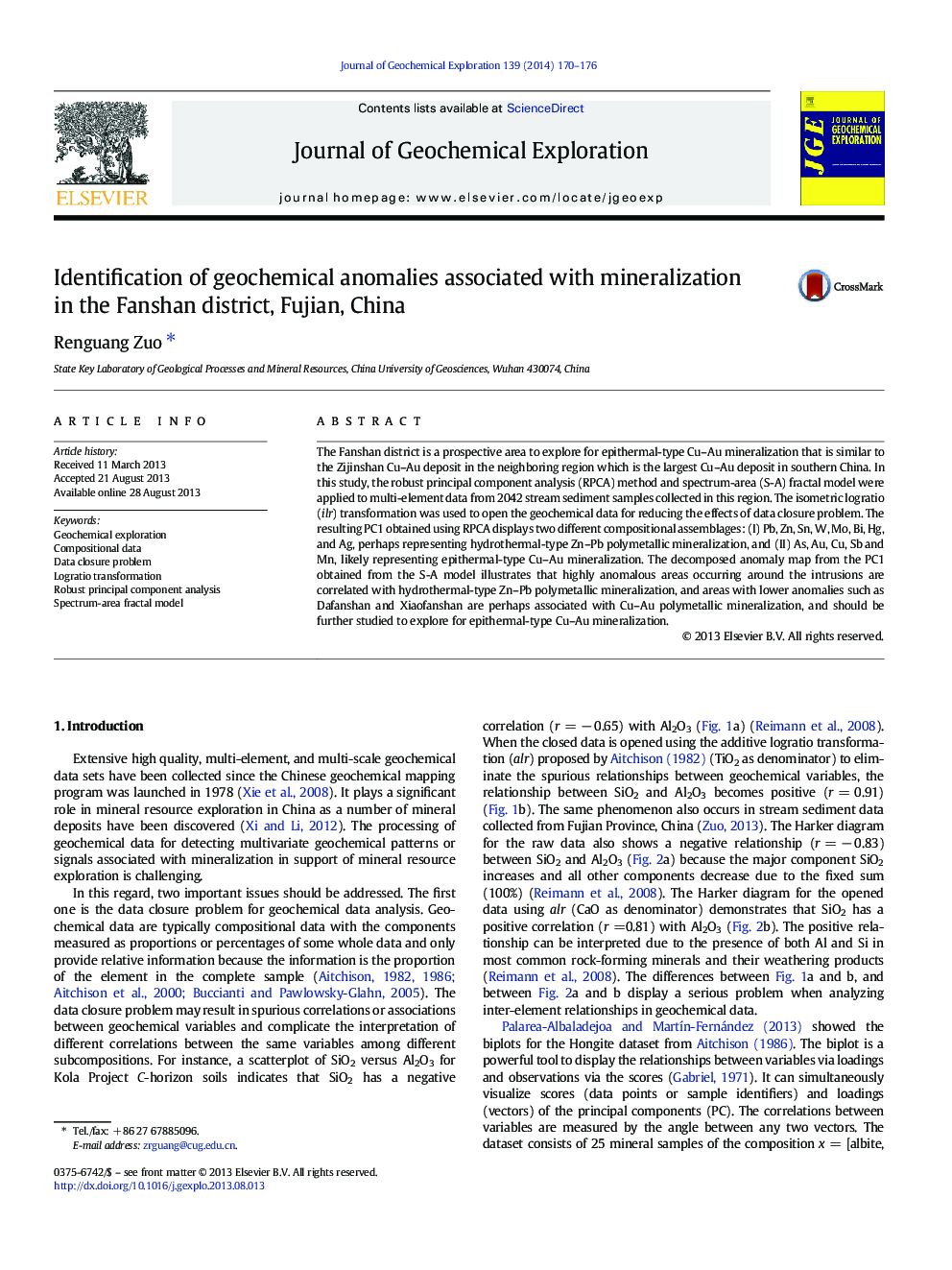| Article ID | Journal | Published Year | Pages | File Type |
|---|---|---|---|---|
| 6344719 | Journal of Geochemical Exploration | 2014 | 7 Pages |
â¢Fanshan district is a prospective area to explore for Cu-Au mineralization.â¢The data closure problem is addressed.â¢The robust principal component analysis was used to combine multiple variables.â¢The resulting of RPCA shows two different composition assemblages.â¢The mixed geochemical pattern is decomposed by the S-A model.
The Fanshan district is a prospective area to explore for epithermal-type Cu-Au mineralization that is similar to the Zijinshan Cu-Au deposit in the neighboring region which is the largest Cu-Au deposit in southern China. In this study, the robust principal component analysis (RPCA) method and spectrum-area (S-A) fractal model were applied to multi-element data from 2042 stream sediment samples collected in this region. The isometric logratio (ilr) transformation was used to open the geochemical data for reducing the effects of data closure problem. The resulting PC1 obtained using RPCA displays two different compositional assemblages: (I) Pb, Zn, Sn, W, Mo, Bi, Hg, and Ag, perhaps representing hydrothermal-type Zn-Pb polymetallic mineralization, and (II) As, Au, Cu, Sb and Mn, likely representing epithermal-type Cu-Au mineralization. The decomposed anomaly map from the PC1 obtained from the S-A model illustrates that highly anomalous areas occurring around the intrusions are correlated with hydrothermal-type Zn-Pb polymetallic mineralization, and areas with lower anomalies such as Dafanshan and Xiaofanshan are perhaps associated with Cu-Au polymetallic mineralization, and should be further studied to explore for epithermal-type Cu-Au mineralization.
